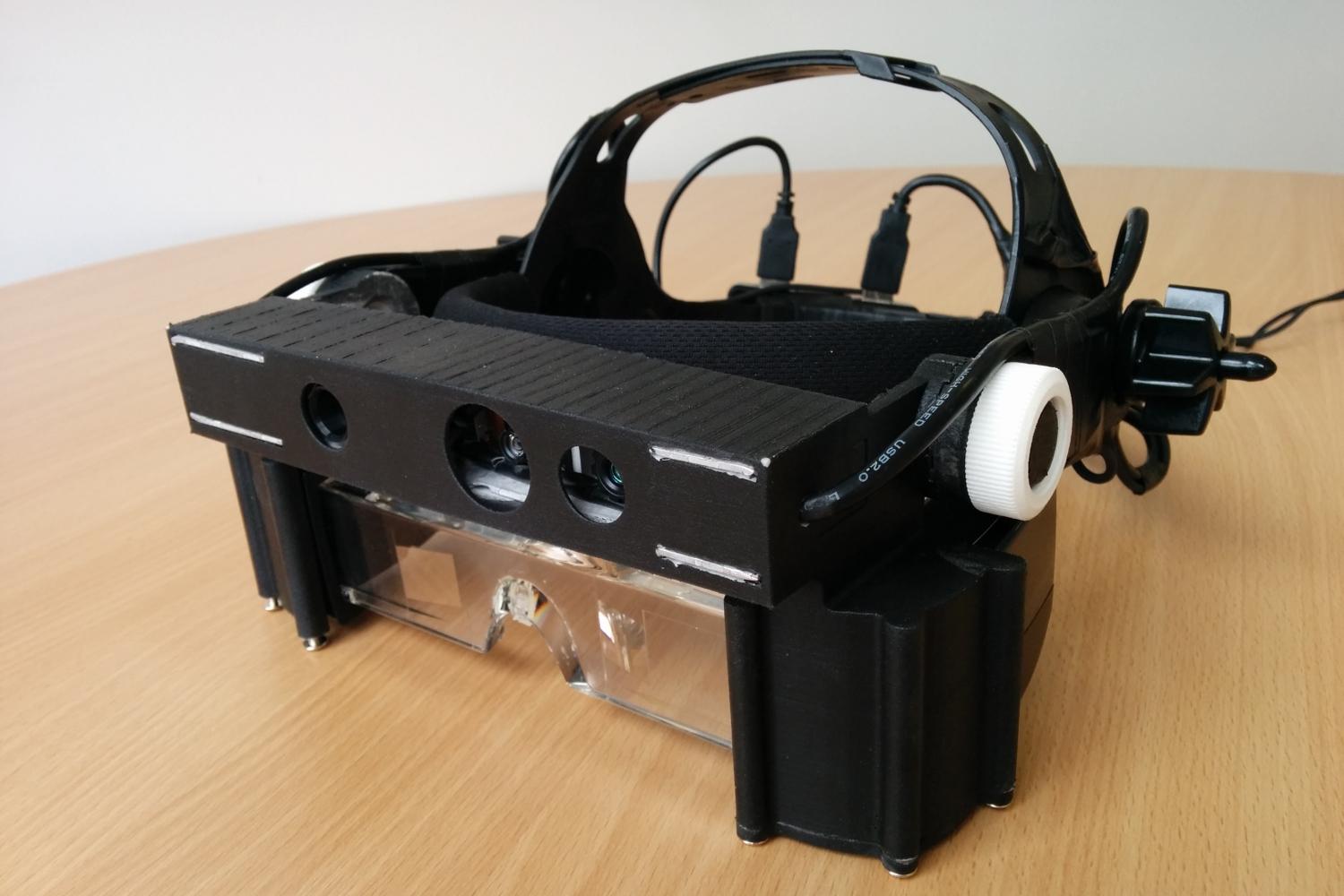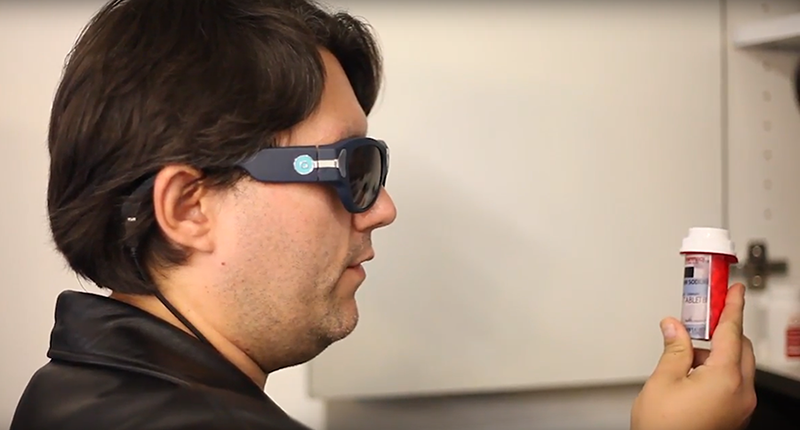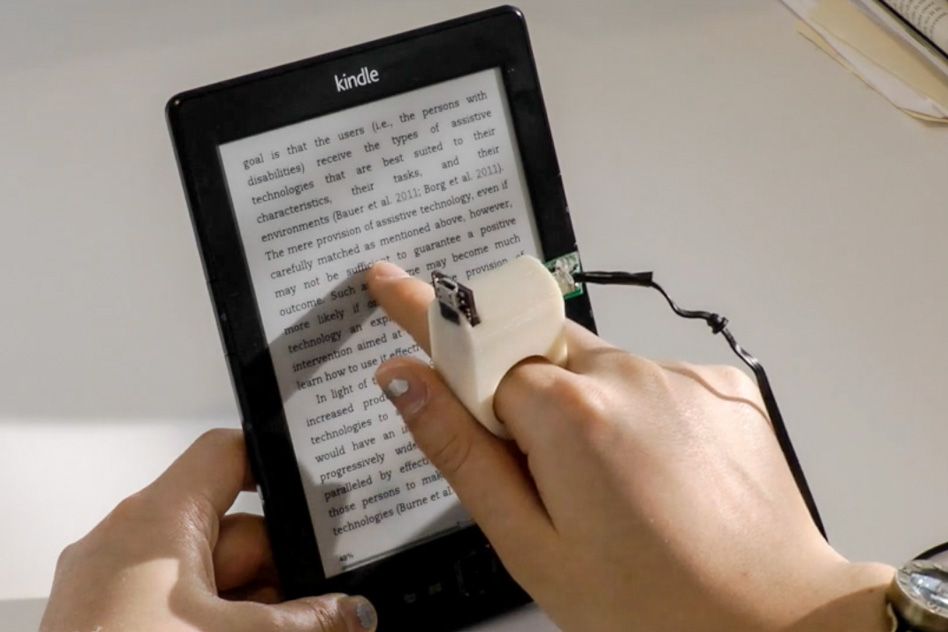AI-Powered Visual Aids: Redefining Support for the Blind
Wiki Article
Discover Innovative Tools Created for the Aesthetically Damaged
The advancement of ingenious tools for the visually damaged stands for a substantial advancement in accessibility and independence. Technologies such as clever glasses with AI capacities and mobile applications designed to provide auditory summaries are improving everyday experiences for users.Smart Glasses for Navigation

Smart glasses created for navigation are changing the means aesthetically damaged individuals communicate with their environment. These innovative devices utilize a mix of camera innovation, fabricated intelligence, and acoustic feedback to offer real-time info about environments. By employing barrier discovery systems, clever glasses can alert customers to prospective dangers, making it possible for more secure flexibility in both strange and acquainted setups.
The integration of GPS technology further boosts navigating capacities, permitting users to obtain acoustic instructions as they relocate. This hands-free technique not just promotes independence however also empowers visually damaged individuals to browse city landscapes with boosted self-confidence. In addition, several clever glasses are furnished with functions that identify spots and road signs, giving contextual information that boosts the individual experience.
Furthermore, the development of these tools is continually advancing, with firms functioning to improve the precision of item recognition and increase the series of navigational attributes. As wise glasses come to be a lot more budget friendly and easily accessible, they hold the potential to considerably change everyday life for aesthetically impaired customers. Ultimately, these cutting-edge devices represent a critical step towards inclusivity, offering enhanced flexibility and a greater feeling of autonomy for people browsing the world around them.

Mobile Application for Daily Living
Exactly how can mobile applications improve the every day lives of visually damaged people? Mobile applications are changing the method visually damaged individuals navigate their settings, take care of everyday tasks, and accessibility info. These applications offer important assistance with various capabilities, promoting self-reliance and improving lifestyle.A number of cutting-edge mobile applications are designed especially for everyday living. As an example, applications like Be My Eyes link aesthetically impaired individuals with sighted volunteers by means of video clip phone calls, allowing them to get real-time assistance with jobs such as reading tags or navigating unfamiliar rooms. In A Similar Way, Seeing AI, developed by Microsoft, utilizes synthetic knowledge to describe surroundings, read message, and recognize items, properly transforming a mobile phone right into a powerful device for everyday support.
Furthermore, navigating applications customized for the aesthetically impaired, such as Aira and BlindSquare, provide audio-based directions and ecological info, making it possible for users to traverse their surroundings safely and confidently. Past navigating and prompt aid, mobile apps also support organization and job administration, with attributes that help users set reminders, create order of business, and track visits. In recap, mobile applications work as vital sources, equipping aesthetically impaired individuals to lead more independent and satisfying lives.
Wearable Technologies for Help
Empowerment via modern technology is significantly obvious in the world of wearable devices designed to help aesthetically impaired people. These innovative devices incorporate flawlessly right into day-to-day live, improving navigation and providing necessary comments to individuals. Clever glasses outfitted with electronic cameras can check out and identify faces text out loud, enabling customers to engage OCR devices for the blind even more with confidence in specialist and social settings.One more significant development is using haptic comments systems in wearable tools. These systems use vibrations or various other tactile signals to communicate information regarding the user's atmosphere, such as obstacles or modifications in terrain, improving wheelchair and safety. Wearable technologies likewise include wristbands that link to smart devices, informing customers to alerts via refined resonances, therefore boosting connectivity without reliance on aesthetic hints.
As these modern technologies continue to advance, they are not just improving independence for visually damaged individuals however also fostering a better sense of addition in culture. By bridging the space in between difficulties faced in everyday living and the possibility for autonomy, wearable innovations function as pivotal tools in the mission for equality and empowerment for those with aesthetic problems.
Sound Summary Devices
Sound description tools play an important duty in enhancing access for aesthetically damaged people, providing them with the ability to involve with visual media. Smart glasses for the visually impaired. These tools offer narrated summaries of crucial aesthetic components in movies, television shows, and live performances, making certain that individuals can completely comprehend the context and emotions conveyed through visualsAudio summary can be incorporated right into various systems, consisting of streaming solutions, movie theater screenings, and live theater. Many popular streaming solutions currently consist of audio description as an access function, enabling audiences to select it easily. In addition to traditional media, specialized apps also exist, providing audio summaries for art exhibits, museums, and various other social occasions.
The efficiency of audio description pivots on the ability of the narrators, that need to communicate visual information succinctly without taking away from the initial audio. Developments in this area are likewise leading the way for even more individualized experiences, where users can adjust the degree of detail and pacing according to their preferences.
Braille Innovations and Instruments
Braille developments and tools have considerably changed the method visually damaged people connect with text and information. Modern innovations have actually led to the advancement of versatile tools that improve proficiency and independence among customers.
Moreover, portable Braille notetakers integrate traditional Braille input with modern-day performances, helping with note-taking, scheduling, and record editing and enhancing on the go. Voice-activated assistive devices. These compact tools commonly include text-to-speech abilities, bridging the gap in between Braille and auditory details
On top of that, cutting-edge Braille printers have arised, permitting individuals to generate Braille labels, files, and instructional materials successfully. This ease of access promotes greater involvement in academic and specialist atmospheres, inevitably promoting inclusivity.
Additionally, research study right into smart Braille technologies continues to broaden. Devices that incorporate expert system are being discovered to give real-time navigation help and contextual info, enhancing the user experience in diverse setups. On the whole, these innovations mirror a dedication to encouraging aesthetically impaired individuals with modern technology, ensuring they can easily access and engage with the world around them.

Verdict
The improvement of ingenious devices for the aesthetically damaged dramatically improves freedom and quality of life. These technologies not just foster better addition however also promote autonomy in daily tasks, eventually adding to an extra easily accessible and fair culture for aesthetically impaired individuals.As clever glasses become much more accessible and affordable, they hold the prospective to substantially transform day-to-day life for visually damaged customers. Mobile apps are revolutionizing the means aesthetically impaired customers browse their settings, manage day-to-day tasks, and access information. Applications like Be My Eyes link visually damaged customers with sighted volunteers using video clip telephone calls, enabling them to obtain real-time assistance with jobs such as checking out labels or browsing unfamiliar spaces.Additionally, navigation apps tailored for the visually impaired, such as Aira and BlindSquare, offer audio-based directions and ecological info, making it possible for users to traverse their surroundings securely and confidently.The innovation of cutting-edge devices for the visually damaged considerably enhances independence and high quality of life.
Report this wiki page